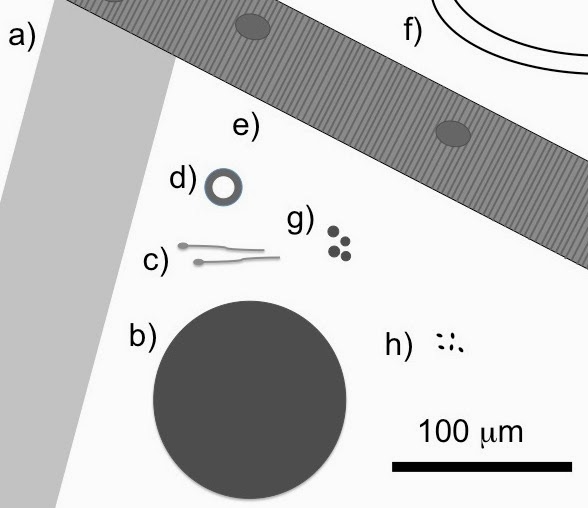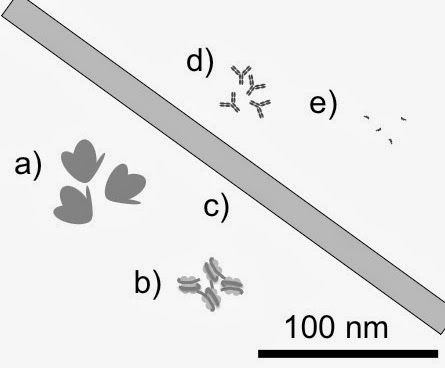| Online: | |
| Visits: | |
| Stories: |

| Story Views | |
| Now: | |
| Last Hour: | |
| Last 24 Hours: | |
| Total: | |
Distances and Sizes
One of the additions that Russ Hobbie and I made to the 4th edition of Intermediate Physics for Medicine and Biology is an initial section in Chapter 1 about Distances and Sizes.
“In biology and medicine, we study objects that span a wide range of sizes: from giant redwood trees to individual molecules. Therefore, we begin with a brief discussion of length scales.”
We then present two illustrations. Figure 1.1 shows objects from a few microns to a few hundred microns in size, including a paramecium, an alveolus, a cardiac cell, red blood cells, and E. coli. Figure 1.2 contains objects from a few to a few hundred nanometers, including HIV, hemoglobin, a cell membrane, DNA, and glucose. Many interesting and important biological structures were left out of these figures.
I admit that our figures are not nearly as well drawn as, say, David Goodsell’s artwork in The Machinery of Life. But, I enjoy creating such drawings, even if I am artistically challenged. So, below are two new illustrations, patterned after Figs. 1.1 and 1.2. Think of them as supplementary figures for readers of this blog.
FIGURE 1.1½. Objects ranging in size from 1 mm down to 1 μm. (a) Human hair, (b) human egg, or ovum, (c) sperm, (d) large myelinated nerve axon, (e) skeletal muscle fiber, (f) capillary, (g) yeast, and (h) mitochondria.
FIGURE 1.2½. Objects ranging in size from 1 μm down to 1 nm. (a) Ribosomes, (b) nucleosomes, (c) tobacco mosaic virus, (d) antibodies, and (e) ATP.
When you combine these figures with those in IPMB, you get a nice overview of the important biological objects at these spatial scales. Two things you do not get are a sense of their dynamic behavior (e.g., Brownian motion) at the microscopic scale, and an appreciation for the atomic nature of all objects (you could not detect single atoms in Fig. 1.2½, but they lurk just below the surface; ATP consists of just 47 atoms).
If you like this sort of thing, you will love browsing through The Machinery of Life or Powers of Ten.
Source: http://hobbieroth.blogspot.com/2014/02/distances-and-sizes.html





